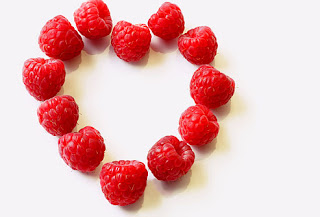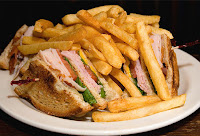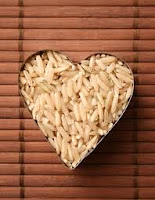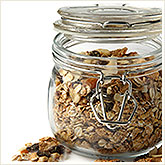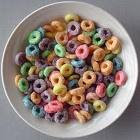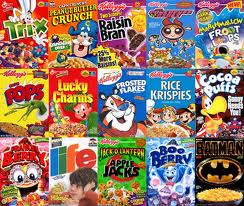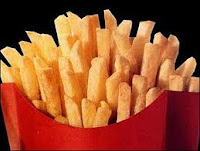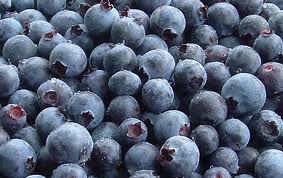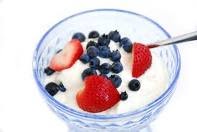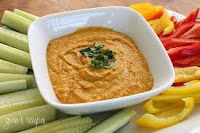Have you been diagnosed with high cholesterol? Is lowering your cholesterol a goal? The first step is to find out: What is cholesterol?
Cholesterol is a waxy, fat-like substance made in the liver and other cells and found in certain foods, such as food from animals, like dairy products, eggs, and meat.
The body needs some cholesterol in order to function properly. Its cell walls, or membranes, need cholesterol in order to produce hormones, vitamin D, and the bile acids that help to digest fat. But the body needs only a limited amount of cholesterol to meet its needs. When too much is present health problems such as heart disease may develop.Cholesterol and Heart Disease
When too much cholesterol is present, plaque (a thick, hard deposit) may form in the body's arteries narrowing the space for blood to flow to the heart. Over time, this buildup causes atherosclerosis (hardening of the arteries) which can lead to heart disease.When not enough oxygen-carrying blood reaches the heart chest pain -- called angina -- can result. If the blood supply to a portion of the heart is completely cut off by total blockage of a coronary artery, the result is a heart attack. This is usually due to a sudden closure from a blood clot forming on top of a previous narrowing.
Types of Cholesterol
Cholesterol travels through the blood attached to a protein -- this cholesterol-protein package is called a lipoprotein. Lipoproteins are classified as high density, low density, or very low density, depending on how much protein there is in relation to fat.- Low density lipoproteins (LDL): LDL, also called "bad" cholesterol, can cause buildup of plaque on the walls of arteries. The more LDL there is in the blood, the greater the risk of heart disease.
- High density lipoproteins (HDL): HDL, also called "good" cholesterol, helps the body get rid of bad cholesterol in the blood. The higher the level of HDL cholesterol, the better. If your levels of HDL are low, your risk of heart disease increases.
- Very low density lipoproteins (VLDL): VLDL is similar to LDL cholesterol in that it contains mostly fat and not much protein.
- Triglycerides: Triglycerides are another type of fat that is carried in the blood by very low density lipoproteins. Excess calories, alcohol, or sugar in the body are converted into triglycerides and stored in fat cells throughout the body.
What Factors Affect Cholesterol Levels?
A variety of factors can affect your cholesterol levels. They include:- Diet. Saturated fat and cholesterol in the food you eat increase cholesterol levels. Try to reduce the amount of saturated fat and cholesterol in your diet.
- Weight. In addition to being a risk factor for heart disease, being overweight can also increase your cholesterol. Losing weight can help lower your LDL and total cholesterol levels, as well as increase HDL cholesterol.
- Exercise. Regular exercise can lower LDL cholesterol and raise HDL cholesterol. You should try to be physically active for 30 minutes on most days.
- Age and Gender. As we get older, cholesterol levels rise. Before menopause, women tend to have lower total cholesterol levels than men of the same age. After menopause, however, women's LDL levels tend to rise.
- Diabetes. Poorly controlled diabetes increases cholesterol levels. With improvements in control, cholesterol levels can fall.
- Heredity. Your genes partly determine how much cholesterol your body makes. High blood cholesterol can run in families.
- Other causes. Certain medications and medical conditions can cause high cholesterol.
Simple Steps to Lower Cholesterol
Has your doctor said you have high cholesterol (called hypercholesterolemia)? Then you know you need to change your diet and lifestyle to lower cholesterol and your risk of heart disease. Even if your doctor prescribed a drug to bring down your levels, you need to change your diet and become more active for cardiovascular health. These simple steps can help you to keep cholesterol levels in check:
Portion Control: Give Yourself a Hand
Most Americans eat super-sized meals with portions being twice what is recommended for good health. That can contribute to weight gain and high cholesterol. Here is an easy way to practice portion control for a meal: Use your hand. One serving of meat or fish is about the size of what will fit into the palm of your hand. One serving of fresh fruit is about the size of your fist. One serving of cooked vegetables, rice or pasta should fit into your cupped hand.
Serve Up the Heart-Healthy Food
Load your plate with fruits and vegetables - FIVE TO NINE servings a day - to help lower LDL "bad" cholesterol. Antioxidants in these foods may provide the benefit. Or it may be that when we eat more fruits and veggies, we eat less fatty foods. Either way, you will also help lower blood pressure and maintain a healthy weight. Foods enriched with plant sterols, such as yogurts and other foods, can also help lower LDL cholesterol.
For Heart Health, Look to the Sea
A heart-healthy diet has fish on the menu TWICE a week. Why? Fish is low in saturated fat and high in healthy omega-3 fatty acids. Omega-3 fatty acids help lower levels of triglycerides, a type of fat in the blood. They may also help lower cholesterol, slowing the growth of plaque in arteries. Go for fatty fish, such as salmon, tuna, trout, and sardines. Just don't drop the filets in the deep fryer - you will negate the health benefits. Want to learn more about Omega-3 fatty acids? Check out this blog post.
Start Your Day with Whole Grains
A bowl of oatmeal or whole-grain cereal has benefits that last all day. The fiber and complex carbohydrates in whole grains help you feel fuller for longer, so you will be less tempted to overeat at lunch. They also help reduce LDL "bad" cholesterol and can be an important part of your weight loss strategy. Other examples of whole grains include wild rice, popcorn, brown rice, barley, and whole-wheat flour. Check out this earlier blog for more information on Whole Grains.
Go Nuts for Cardiovascular Health
Need a snack? A handful of nuts is a tasty treat that helps in lowering cholesterol. Nuts are high in monounsaturated fat, which lowers LDL "bad" cholesterol while leaving HDL "good" cholesterol intact. Several studies show that people who eat about an ounce of nuts a day have lower risk of heart disease. Nuts are high in fat and calories, so only eat a handful. And make sure they are NOT covered in sugar or chocolate.
Unsaturated Fats Protect the Heart
We all need a little fat in our diets - about 25% to 35% of our daily calories. But the type of fat matters. Unsaturated fats, like those found in canola, olive oil, and safflower oils, help lower LDL "bad" cholesterol levels and may help raise HDL "good" cholesterol. Saturated fats, like those found in butter and palm oil, and trans fats rais LDL cholesterol. Even good fats have calories, so eat in moderation.
More Beans, Fewer Potatoes
You need carbohydrates for energy, but some do your body more good than others. Whole grains, such as brown rice or quinoa, whole-wheat pasta, and beans have more fiber and raise blood sugar levels less. These help lower cholesterol and keep you feeling full longer. other carbs, like those found in white bread, white potatoes, white rice, and pastries, boost blood sugar levels more quickly, leading you to feel hungry sooner, and may increase risk for overeating.
Move It!
Even 30 minutes of physical activity five days a week (20 minutes three times a week for vigorous exercise, such as jogging) can help lower LDL cholesterol and raise HDL cholesterol -- although more exercise is even better. It also helps you maintain an ideal weight, reducing your chance of developming clogged arteries. You don't have to exercise for 30 minutes straight - you can break it up into 10-minute increments.
Walk It Off
If you are not used to exercising - or hate the thought of going to a gym - just go for a walk. It is easy, healthy, and all you need is a good pair of shoes. Aerobic or cardiovascular exercise such as walking lowers risk of stroke and heart diseas, helps you lose weight, and keeps bones strong. If you are just starting out, try a 10-minute walk and gradually build up from there.
Work Out Without Going to the Gym
If exercise sounds like a dirty word to you, here is some good news: You can boost your heart health by incorporating physical activity into your day. Any kind of cardiovascular activity counts - gardening, dancing, or taking the stairs instead of the elevator. Even housework can qualify as exercise, as long as you are doing serious cleaning that gets your heart rate up and not just light dusting.
What to Do When Eating Out
If you are eating healthy food at home to keep cholesterol in check, don't blow it when you eat out. Restaurant food can be loaded with saturated fat, calories, and sodium. Even healthy choices may come in super-sized portions. Try these tips to stay on track:
- Choose broiled, baked, steamed, and grilled foods - not fried.
- Ask for it to be cooked without butter and with olive oil or without any added fat
- Get sauces on the side
- Practice portion control by asking for half your meal to be boxed up before it is brought out or split with a friend.
Look for Hidden Traps
A close look at nutrition labels is essential for a low-cholesterol, heart-healthy diet. Try these tips:
- Check serving sizes. The nutrition info may look good, but does the package contain two servings instead of one?
- If it says "whole grain", read the ingredients. Whole wheat or whole grain should be the first one.
- A food with "O grams cholesterol" could still raise your LDL cholesterol. Saturated fat is the other culprit to watch for.
Don't Stress Out
Chronic stress can raise blood pressure, adding to your risk of atherosclerosis, which occurs when plaque from cholesterol builds up in arteries. And research shows that for some poeple, stress might directly increase cholesterol levels. Reduce your stress levels with relaxation exercises, meditation, or biofeedback. Focus on your breathing and take deep, refreshing breaths. It is a simple stress-buster you can do anywhere.
When Losing Means Winning
Losing wight is one of the best things you can do to fight cardiovasular disease. Being obese increases the risk of high cholesterol, high blood pressure, and type 2 diabetes. These all affect the lining of your arteries, making them more prone to collect plaque from cholesterol. Losing weight - especially belly fat, which is linked to hardening of the arteries - helps rais HDL "good" cholesterol and reduce LDL "bad cholesterol.
By focusing on the things that you can control like diet and exercise, you can make great strides in your goal of lowering your cholesterol. If you would like more help in meeting your goals, and learning more about living a healthy lifestyle, visit Green Peas and Blueberries. I focus on helping families live a healthy lifestyle in spite of crazy schedules.
Adapted from Cholesterol Management Center at WebMD
WHAT'S FOR DINNER TONIGHT?
Here is a quick, easy and heart healthy dinner using a great lean, pork tenderloin, fresh cauliflower and a variety of whole grains.
Balsamic Marinated Pork Tenderloin
Servings: 4
1 medium pork tenderloin
3 T Balsamic vinegar
2 T Olive oil
3 T chopped fresh herbs, any variet (I used rosemary, sage and lavender)
1 t chopped garlic
Coarse sea salt and freshly ground pepper, to taste
Combine all ingredients in ziplock bag except tenderloin. Seal bag and shake well to mix, then add tenderloin. Remove as much air as possible when sealing bag. Turn several times to coat tenderloin, place in fridge to marinate for 1 hour to overnight.
Preheat oven to 375 degrees. Remove tenderloin from the bag and place on a sheet pan. Roast in oven for about 20 minutes until meat is done. Remove from oven and let rest loosely covered in foil for about 5 minutes.
Serve with roasted cauliflower drizzled in olive oil and salt and pepper and any variety of whole grain, such as brown rice or quinoa. I needed a quick one, so I pulled out a package of Uncle Ben's Ready Whole Grain Medley pouch in Roasted Garlic. It has brown rice and red and black quinoa. It has more sodium than I would prefer, but not a bad choice in a pinch.

